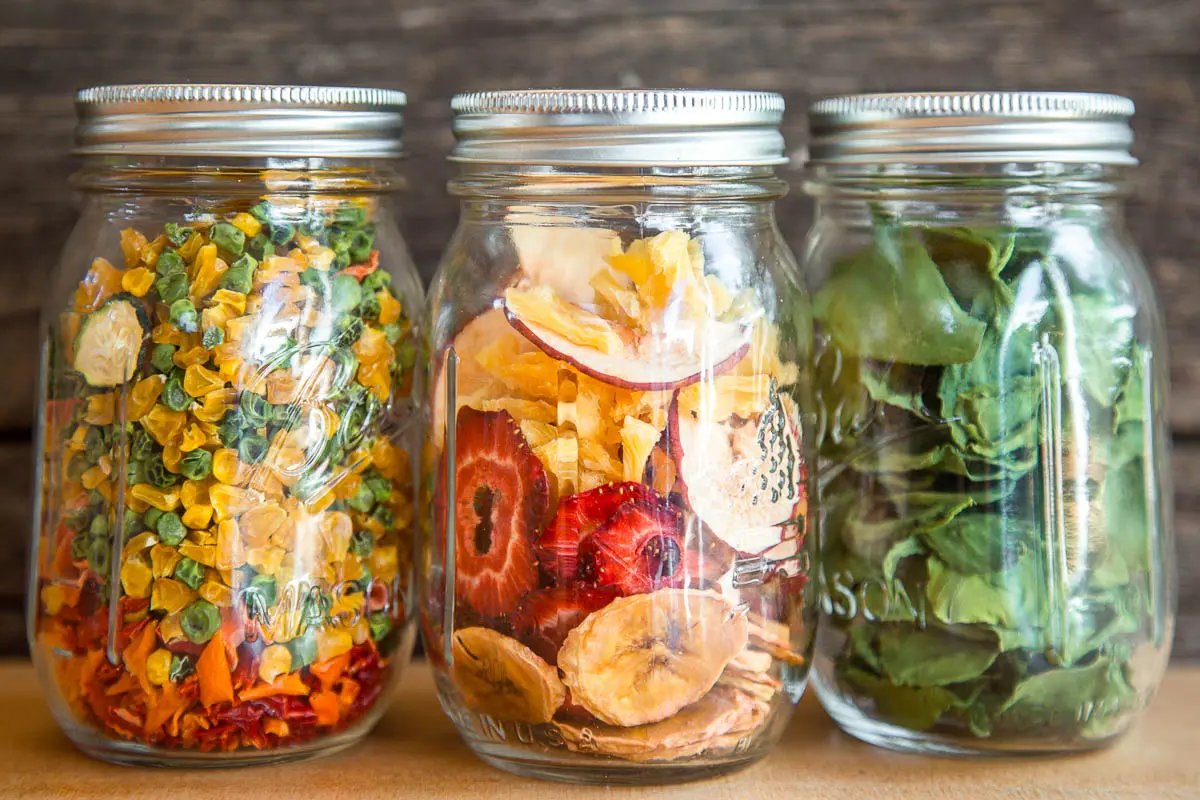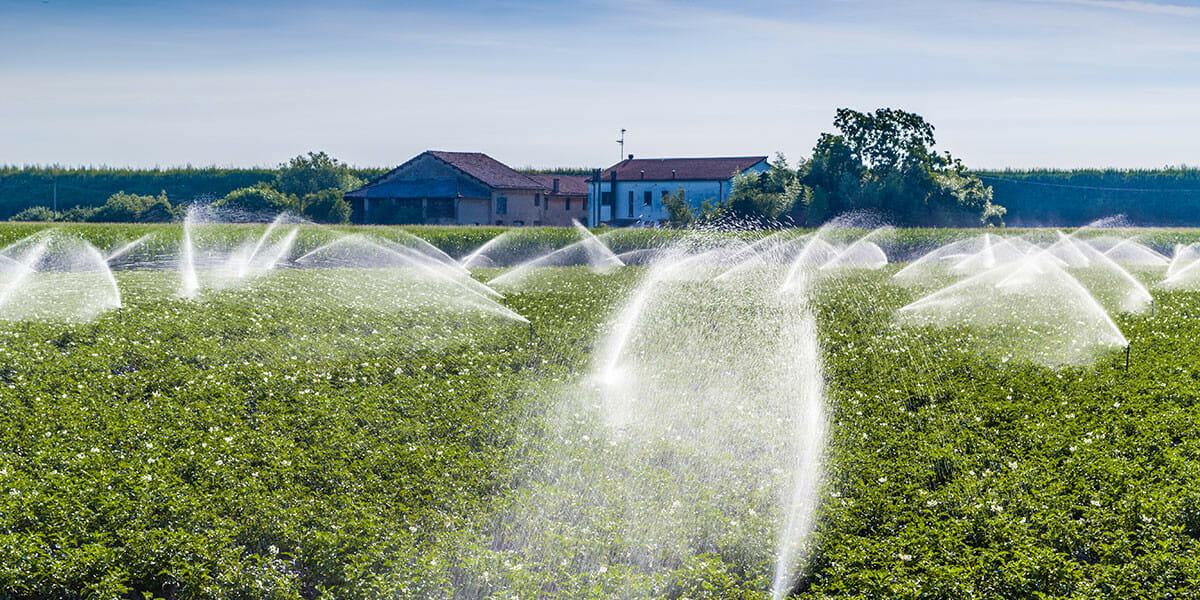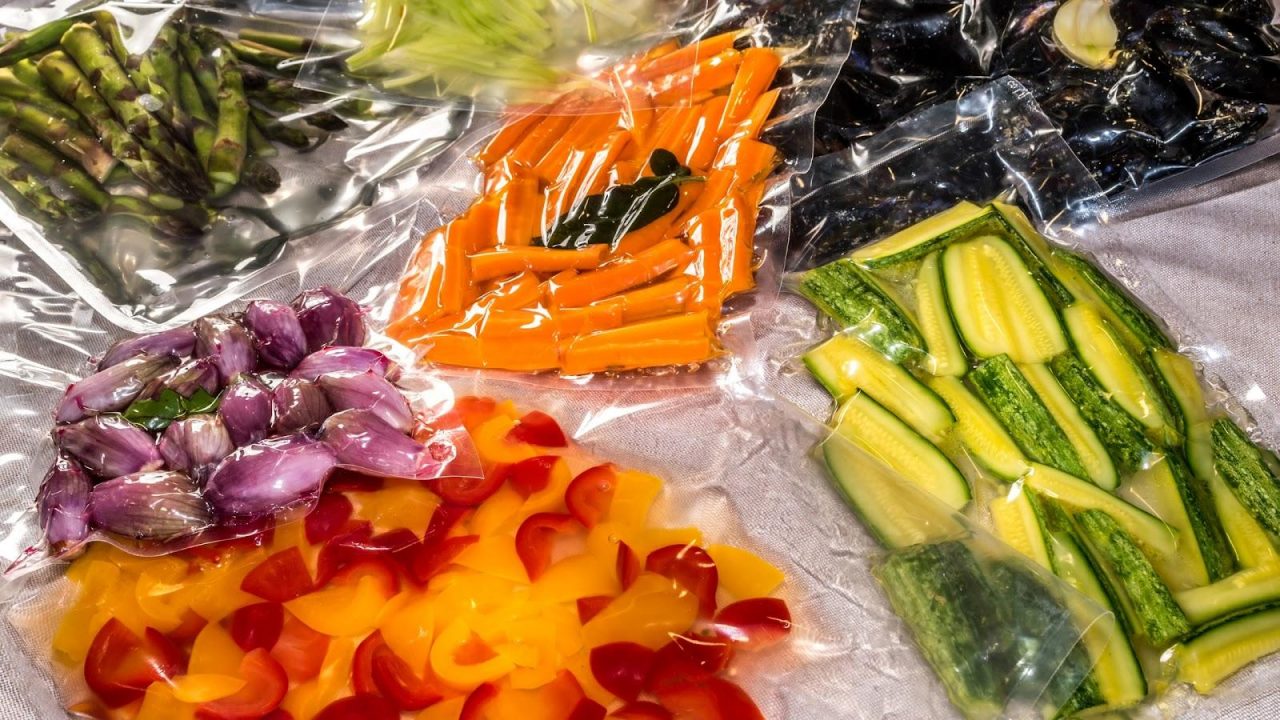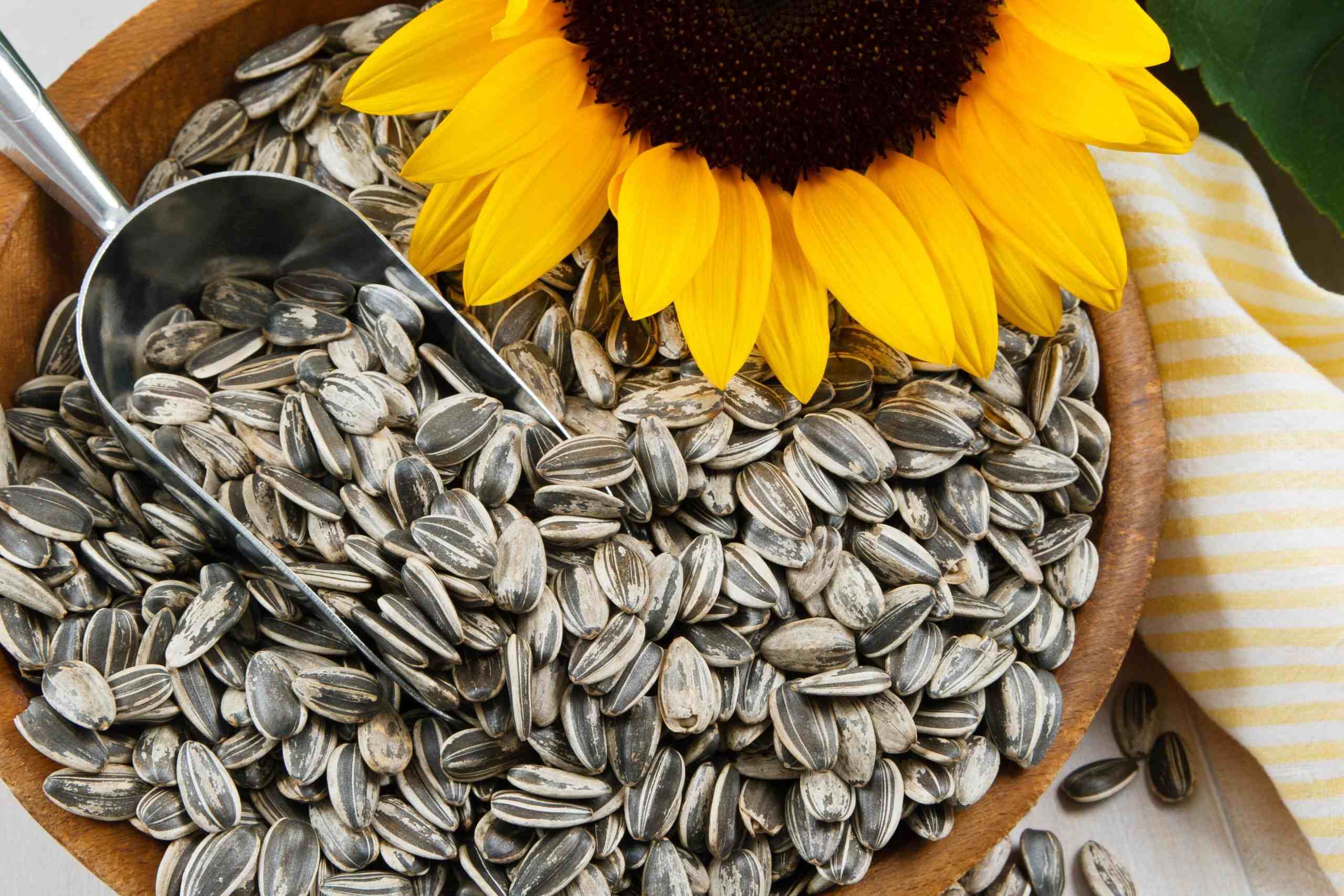Home>Gardening News and Trends>Latest News>How Long Do Dehydrated Vegetables Last


Latest News
How Long Do Dehydrated Vegetables Last
Published: October 13, 2023
Stay up-to-date with the latest news on how long dehydrated vegetables last. Find out the shelf life and best storage practices for dried veggies.
(Many of the links in this article redirect to a specific reviewed product. Your purchase of these products through affiliate links helps to generate commission for Chicagolandgardening.com, at no extra cost. Learn more)
Table of Contents
Introduction
Dehydrated vegetables have gained popularity in recent years due to their long shelf life and convenient usage. They are a great option for those who want to incorporate vegetables into their diet even when fresh produce is not readily available. Dehydrated vegetables are created by removing the water content from the vegetables, leaving behind a lightweight and nutrient-dense product.
These vegetables offer a range of benefits. Firstly, dehydrated vegetables retain most of their nutrients, making them a nutritious addition to meals. Secondly, they are versatile and can be used in various recipes, including soups, stews, sauces, and even as a snack on their own. Lastly, dehydrated vegetables are a convenient option for outdoor enthusiasts, travelers, and those preparing for emergencies as they do not require refrigeration.
Understanding the shelf life of dehydrated vegetables is vital to ensure their quality and safety for consumption. Various factors can influence how long dehydrated vegetables last, including the quality of the vegetables, the dehydration method used, and the storage conditions.
In this article, we will explore the factors that affect the shelf life of dehydrated vegetables, provide guidelines for proper storage conditions, discuss the specific shelf life of different types of dehydrated vegetables, and offer tips to extend their shelf life. By following these recommendations, you can maximize the freshness and nutritional value of your dehydrated vegetables.
So, let’s dive into the fascinating world of dehydrated vegetables and learn how to make the most of these tasty and nutritious pantry staples.
Factors Affecting Shelf Life of Dehydrated Vegetables
Several factors can influence the shelf life of dehydrated vegetables. Understanding these factors is crucial for maintaining the quality and safety of your dehydrated veggies:
1. Quality of the vegetables: The quality of the vegetables used for dehydration plays a significant role in determining the shelf life. Fresh and high-quality vegetables will result in dehydrated products that are more resistant to spoilage and degradation.
2. Dehydration method: The method used for dehydrating vegetables can impact their shelf life. Different methods, such as air drying, sun drying, or using a food dehydrator, can produce different results. It is important to follow proper dehydration techniques to ensure that the vegetables are adequately dried and have a longer shelf life.
3. Moisture content: The moisture content of dehydrated vegetables is crucial for their shelf life. Even a small amount of moisture can lead to the growth of bacteria, mold, and spoilage. It is essential to ensure that the vegetables are thoroughly dried before storing them to prevent any moisture-related issues.
4. Storage conditions: The storage conditions of dehydrated vegetables greatly affect their shelf life. Exposure to light, heat, humidity, and oxygen can accelerate the degradation process. It is best to store dehydrated vegetables in a cool, dark, and dry place, preferably in airtight containers or vacuum-sealed bags to minimize exposure to these factors.
5. Packaging: The packaging of dehydrated vegetables is also crucial for their shelf life. Proper packaging helps to protect the vegetables from moisture, air, and light. Airtight containers or vacuum-sealed bags are recommended for storing dehydrated vegetables, as they can significantly prolong their shelf life by keeping out detrimental elements.
By considering these factors and following proper handling and storage practices, you can extend the shelf life of your dehydrated vegetables and ensure that they remain fresh and flavorful for an extended period.
So, now that we understand the factors that affect the shelf life of dehydrated vegetables, let’s delve into the optimal storage conditions that will help maintain their quality.
Storage Conditions for Dehydrated Vegetables
Proper storage conditions are crucial for maximizing the shelf life of dehydrated vegetables. Here are some guidelines to ensure that your dehydrated vegetables remain fresh and flavorful for an extended period:
1. Temperature: It is best to store dehydrated vegetables in a cool environment to preserve their quality. Ideally, the storage temperature should be around 50 to 70 degrees Fahrenheit (10 to 21 degrees Celsius). Avoid storing them in areas that are prone to temperature fluctuations, such as near the stove or in direct sunlight, as these can accelerate spoilage.
2. Humidity: Moisture is the enemy of dehydrated vegetables, so it is important to keep them away from high humidity areas. Excessive moisture can lead to the growth of mold and bacteria, causing spoilage. Choose a dry storage area with low humidity levels for optimal longevity.
3. Light: Exposure to light can cause the degradation of dehydrated vegetables, leading to nutrient loss and flavor deterioration. Store your dehydrated vegetables in a dark location, such as a pantry or cupboard. If using transparent containers, try to store them in a dark place or wrap them in aluminum foil or a brown paper bag to minimize light exposure.
4. Air and Oxygen: Oxygen can cause oxidation and spoilage of dehydrated vegetables. To protect them from oxygen exposure, store them in airtight containers or vacuum-sealed bags. Removing as much air as possible from the packaging will help maintain their quality and freshness.
5. Labeling and Rotation: Proper labeling and rotation of your dehydrated vegetables is essential to ensure that you use them before they expire. Write the date of dehydration on the packaging and organize them in a way that allows you to access the oldest ones first. This will help you prevent waste and ensure that you consume them within their recommended shelf life.
By following these storage guidelines, you can extend the shelf life of your dehydrated vegetables and enjoy their nutritional benefits for a longer period. Remember to check the packaging for any signs of spoilage before using them and discard any products that appear off in smell, taste, or appearance.
Now that we have covered the storage conditions, let’s move on to explore the specific shelf life of different types of dehydrated vegetables.
Shelf Life of Specific Dehydrated Vegetables
The shelf life of dehydrated vegetables can vary depending on the type of vegetable. Here are some guidelines on the approximate shelf life of specific dehydrated vegetables:
1. Dehydrated Fruits:
– Apples: Dehydrated apple slices can last up to 1 year when stored properly.
– Bananas: Dehydrated banana chips can have a shelf life of 6 to 12 months.
– Strawberries: Dehydrated strawberries can last up to 1 year if stored correctly.
2. Dehydrated Vegetables:
– Carrots: Dehydrated carrot slices can last for about 1 to 2 years.
– Bell Peppers: Dehydrated bell peppers can have a shelf life of 1 to 2 years when stored properly.
– Tomatoes: Dehydrated tomatoes can last up to 1 year.
3. Dehydrated Leafy Greens:
– Spinach: Dehydrated spinach can have a shelf life of 1 to 2 years if stored correctly.
– Kale: Dehydrated kale can last for about 1 to 2 years.
It is important to note that these are general guidelines, and the actual shelf life may vary depending on the quality of the vegetables, the dehydration method used, and the storage conditions. Factors such as exposure to light, heat, humidity, and oxygen can accelerate the degradation process and shorten the shelf life of dehydrated vegetables.
To ensure that your dehydrated vegetables stay fresh for as long as possible, it is crucial to follow proper storage practices and periodically check for any signs of spoilage. If you notice any signs of mold, off odors, or changes in texture or color, it is best to discard the product to maintain food safety.
By understanding the approximate shelf life of specific dehydrated vegetables, you can plan your storage and consumption accordingly. Now, let’s discover some tips to help extend the shelf life of your dehydrated vegetables even further.
Tips for Extending the Shelf Life of Dehydrated Vegetables
Extending the shelf life of dehydrated vegetables involves proper handling, storage, and maintenance. Here are some essential tips to help you maximize the longevity of your dehydrated veggies:
1. Thoroughly dry the vegetables: Ensure that your vegetables are properly dehydrated before storing them. Any remaining moisture can lead to spoilage and the growth of bacteria. Follow the recommended drying times and techniques for each type of vegetable to achieve optimal results.
2. Use high-quality vegetables: Start with fresh, high-quality vegetables to ensure the best possible outcome. Fresh vegetables have higher nutritional value and are less prone to spoilage, resulting in longer shelf life for the dehydrated product.
3. Store in airtight containers: Use airtight containers or vacuum-sealed bags to store your dehydrated vegetables. This will prevent air from oxidizing the vegetables and keep them safe from moisture and pests. Make sure to remove as much air as possible from the packaging before sealing to maintain freshness.
4. Keep away from light and heat: Protect your dehydrated vegetables from light, heat, and humidity by storing them in a cool, dark, and dry place. Excessive exposure to these elements can degrade the quality of the vegetables and shorten their shelf life.
5. Avoid frequent opening: Limit the number of times you open the containers or bags containing your dehydrated vegetables. Each time you open them, you expose the vegetables to oxygen, moisture, and potential contaminants, which can shorten their shelf life. Take out only what you need and quickly reseal the packaging.
6. Rotate your stock: Practice first-in, first-out (FIFO) rotation to ensure that you use the oldest dehydrated vegetables first. This helps prevent waste and ensures that you consume them within their recommended shelf life.
7. Monitor for signs of spoilage: Regularly inspect your dehydrated vegetables for any signs of spoilage, such as mold, unusual odors, or changes in texture or color. If you notice any indications of spoilage, discard the affected portions or the entire batch to prevent the spread of contaminants.
By following these tips, you can prolong the shelf life of your dehydrated vegetables and maintain their quality and flavor for an extended period. Make sure to take proper care when handling and storing your dehydrated veggies to reap the maximum benefits from this convenient food preservation method.
Now that we have explored the tips for extending the shelf life of dehydrated vegetables, let’s discuss the significance of properly stored dehydrated vegetables.
Significance of Properly Stored Dehydrated Vegetables
Properly storing dehydrated vegetables is essential for several reasons. Here are the key significance of storing them correctly:
1. Nutritional Value: When dehydrated vegetables are stored properly, they retain their essential nutrients for extended periods. Vitamins, minerals, and antioxidants remain intact, allowing you to enjoy the health benefits of these vegetables even when fresh options are not available. By properly storing dehydrated vegetables, you can maintain their nutritional value and ensure a nutrient-rich food supply.
2. Convenience: Dehydrated vegetables provide a convenient way to include vegetables in your diet. Proper storage ensures that you always have a supply of nutritious and versatile vegetables on hand. Whether you’re camping, traveling, or need a quick addition to your recipes, properly stored dehydrated vegetables offer a hassle-free and easy-to-use solution.
3. Cost-effective: By investing in dehydrated vegetables and storing them properly, you can save money in the long run. Seasonal vegetables can be purchased and dehydrated when they are in abundance and less expensive. Properly stored dehydrated vegetables have a long shelf life, reducing the chances of food waste and the need for frequent grocery shopping.
4. Emergency Preparedness: Dehydrated vegetables are a valuable addition to your emergency food supply. Natural disasters or unforeseen circumstances can disrupt the availability of fresh produce. Properly stored dehydrated vegetables can serve as a reliable source of nutrition during emergencies, providing sustenance when access to fresh food is limited.
5. Reduced Food Waste: Storing dehydrated vegetables properly helps minimize food waste. Unlike fresh vegetables that can spoil quickly, dehydrated vegetables have a significantly longer shelf life when handled and stored correctly. By preserving vegetables through dehydration and maintaining their quality through proper storage, you can reduce food waste and contribute to a more sustainable lifestyle.
6. Taste and Flavor: Proper storage ensures that your dehydrated vegetables retain their taste and flavor. When stored in airtight containers or vacuum-sealed bags, dehydrated vegetables maintain their original flavors and aromas for an extended period. This allows you to enjoy the natural taste of vegetables in various dishes and recipes.
By recognizing the significance of properly stored dehydrated vegetables, you can fully appreciate their value as a nutritious, convenient, and cost-effective food option. Follow the guidelines for storage and handling to make the most out of your dehydrated vegetable supply.
Now that we have explored the significance of properly stored dehydrated vegetables, let’s wrap up this article with a brief summary of the key points covered.
Conclusion
Dehydrated vegetables are a versatile and nutritious addition to any pantry. Understanding the factors that affect their shelf life and following proper storage practices is crucial for maintaining their quality and safety.
We have discussed the importance of using high-quality vegetables, thorough drying, and suitable storage conditions, such as temperature, humidity, light, and air exposure. By implementing these guidelines, you can extend the shelf life of your dehydrated vegetables and enjoy their nutritional benefits for an extended period.
Furthermore, we explored the approximate shelf life of specific dehydrated vegetables, giving you an idea of how long you can expect them to last when stored properly. Remember to periodically check for signs of spoilage and follow the first-in, first-out (FIFO) method to ensure that you consume your dehydrated vegetables within their recommended shelf life.
Properly stored dehydrated vegetables offer numerous benefits, including preserved nutrients, convenience, cost-effectiveness, emergency preparedness, reduced food waste, and maintained taste and flavor. By recognizing the significance of storing them correctly, you can fully appreciate their value as a reliable and nutritious food option.
So, whether you are an outdoor enthusiast, a traveler, or simply looking to enhance your meal preparations, dehydrated vegetables can be your go-to ingredient. By following the guidelines provided in this article, you can make the most of your dehydrated vegetable supply and enjoy the nutritional benefits they offer.
Remember, when it comes to dehydrated vegetables, proper storage is key. So, stock up, store them correctly, and savor the flavors and nutrition of these versatile pantry staples for months or even years to come.









